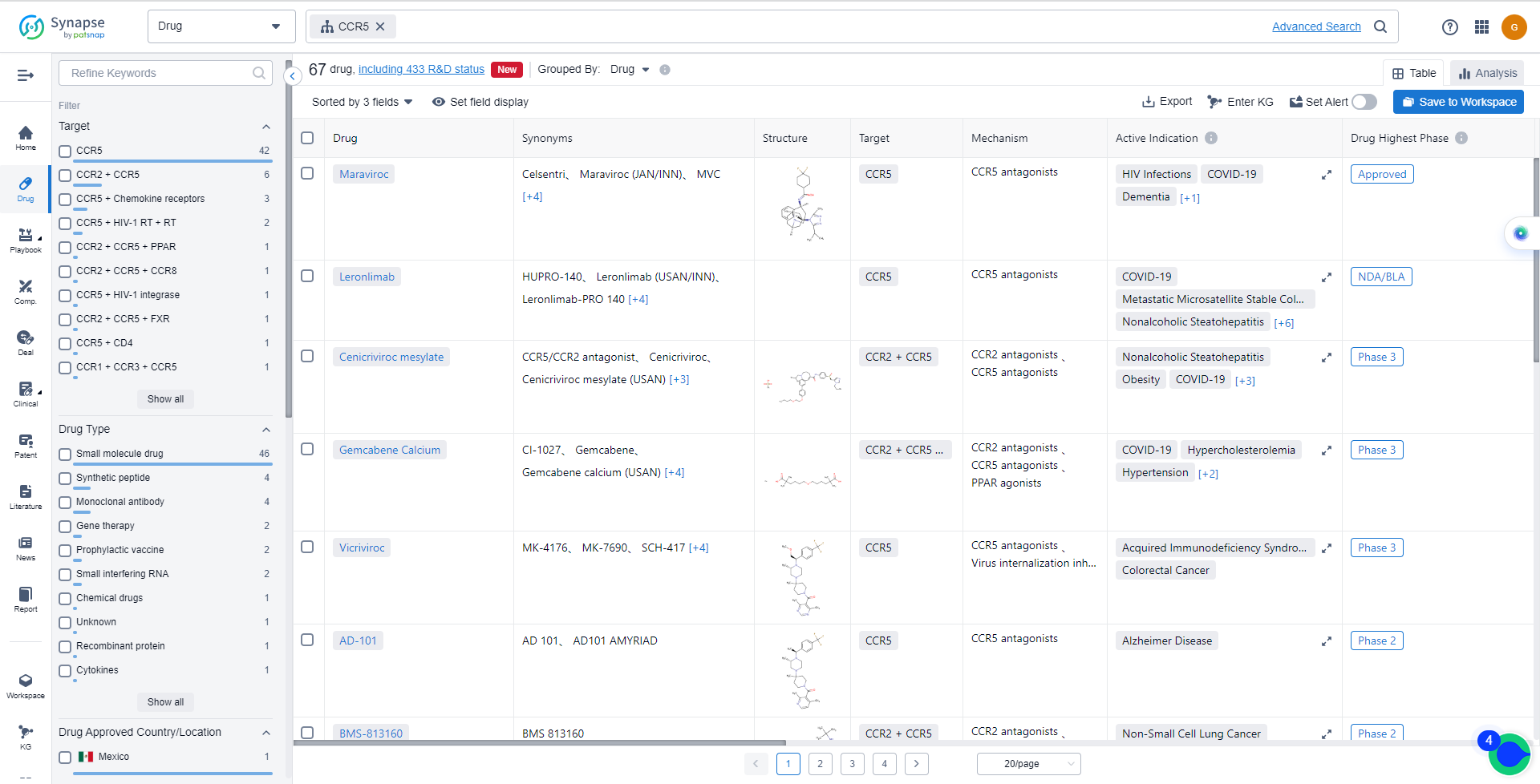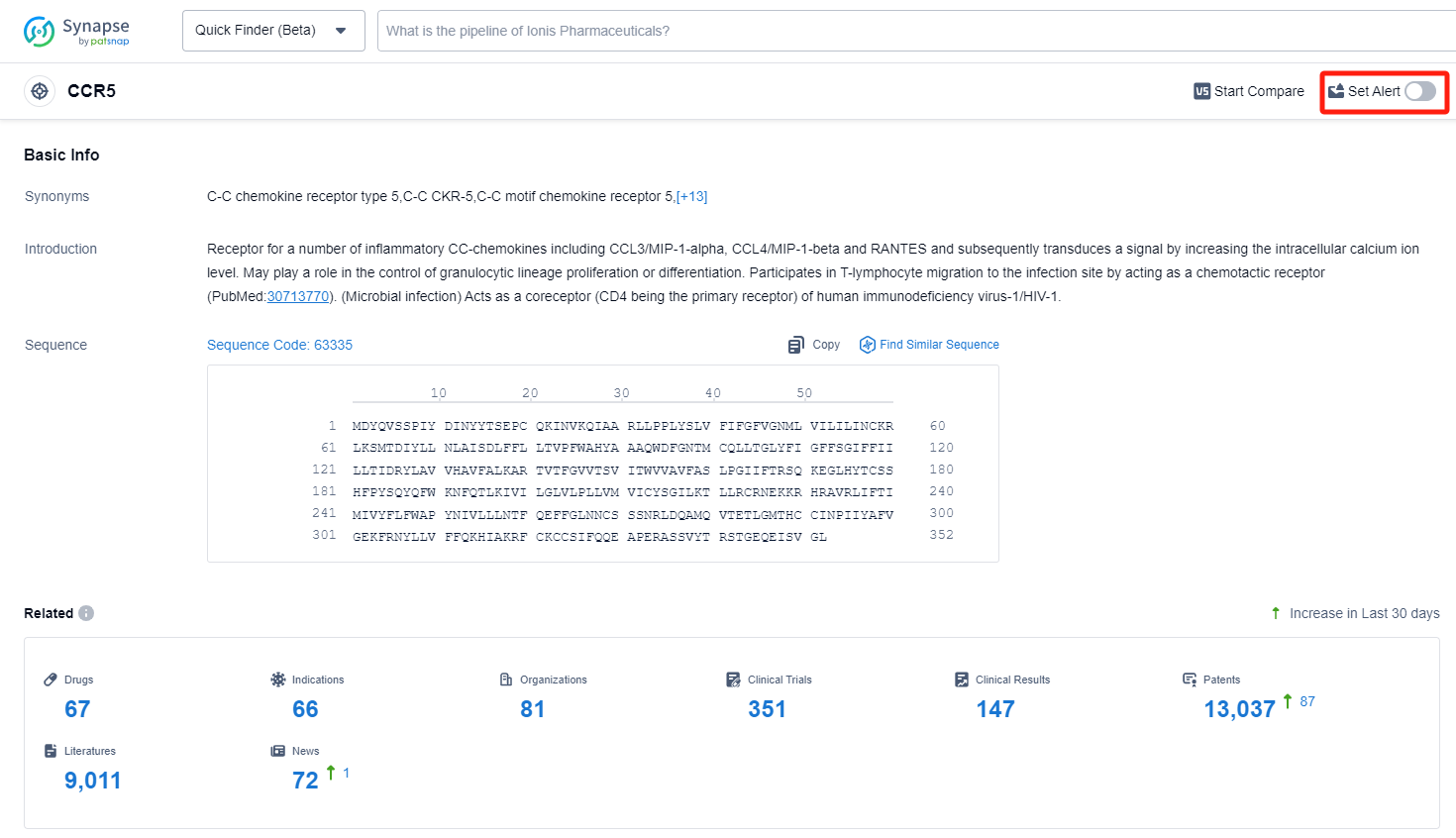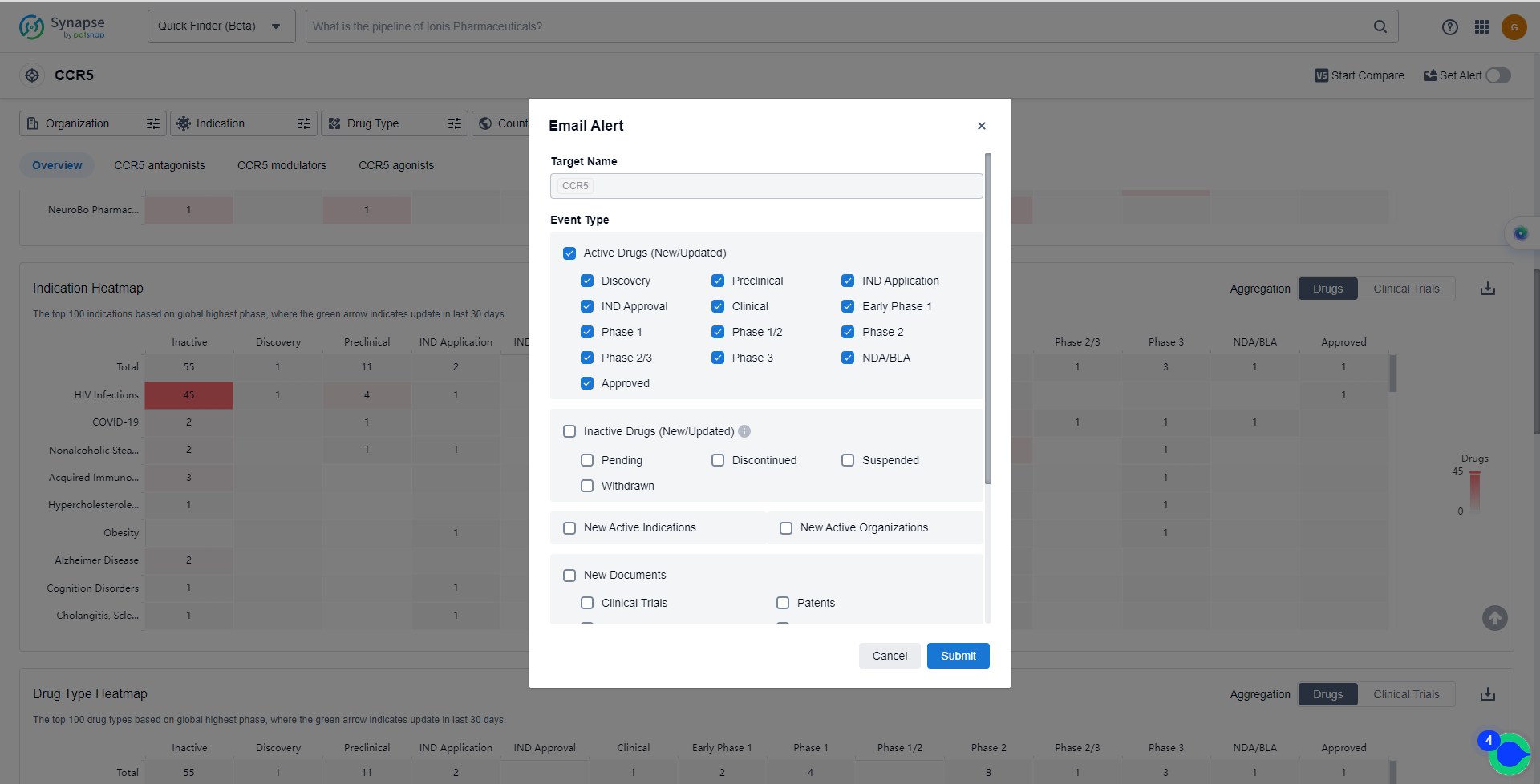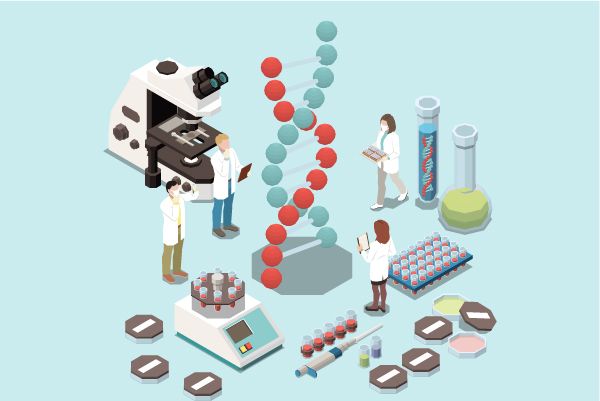CCR5 Antagonists: A Comprehensive Guide and How to Keep Up with the Latest Developments
CCR5, or C-C chemokine receptor type 5, is a protein receptor found on the surface of certain immune cells. It plays a crucial role in the immune response by facilitating the migration and activation of immune cells to sites of inflammation or infection. CCR5 is particularly important in the context of HIV infection, as it serves as a co-receptor for the virus to enter immune cells. Inhibiting CCR5 has been a target for antiretroviral therapies, aiming to prevent HIV from entering and infecting immune cells. Additionally, CCR5 has been implicated in various inflammatory diseases, making it a potential target for therapeutic interventions in the pharmaceutical industry.
The analysis of the target CCR5 in the pharmaceutical industry reveals a competitive landscape with multiple companies actively involved in research and development. GSK Plc, Pfizer Inc., and Viatris Inc. are among the companies growing fastest under this target. The highest stage of development is seen in GSK Plc, with one drug approved and one drug in Phase 2. Indications such as HIV Infections, COVID-19, and Nonalcoholic Steatohepatitis have approved drugs under the target CCR5. Small molecule drugs and monoclonal antibodies are progressing rapidly, indicating intense competition. The United States, European Union, and China are among the countries developing fastest under this target, with China showing significant progress. Overall, the target CCR5 presents opportunities for further research and development in various indications and drug types.
How do they work?
CCR5 antagonists are a type of medication that target the CCR5 receptor, which is a protein found on the surface of certain immune cells. From a biomedical perspective, CCR5 antagonists are used in the treatment of various conditions, particularly in the field of virology and immunology.
The CCR5 receptor plays a crucial role in the entry of certain viruses, such as HIV, into immune cells. By blocking or antagonizing the CCR5 receptor, these medications can prevent the viruses from binding to and infecting the cells. Therefore, CCR5 antagonists are commonly used as antiviral agents, specifically in the management of HIV infection.
By inhibiting the CCR5 receptor, these antagonists can help reduce the viral load in individuals with HIV, slow down the progression of the disease, and potentially prevent transmission of the virus to others. They are often used in combination with other antiretroviral drugs as part of highly active antiretroviral therapy (HAART).
It is important to note that CCR5 antagonists have specific indications and are not suitable for all individuals with HIV. They are primarily used in patients who have a particular genetic mutation called CCR5 delta-32, which affects the CCR5 receptor and makes them less susceptible to HIV infection. Additionally, these medications may have side effects and interactions with other drugs, so they should be used under the guidance of a healthcare professional.
In summary, CCR5 antagonists are a type of medication that block the CCR5 receptor, primarily used in the treatment of HIV infection. They help reduce viral load, slow down disease progression, and potentially prevent transmission of the virus.
List of CCR5 Antagonists
The currently marketed CCR5 antagonists include:
- Maraviroc
- Leronlimab
- Cenicriviroc mesylate
- Gemcabene Calcium
- Vicriviroc
- AD-101
- BMS-813160
- Emtricitabine/Maraviroc/Tenofovir Disoproxil Fumarate
- Thioraviroc
- OB-002H
For more information,please click on the image below.
What are CCR5 antagonists used for?
CCR5 antagonists are are commonly used as antiviral agents, specifically in the management of HIV infection. For more information, please click on the image below to log in and search.
How to obtain the latest development progress of CCR5 antagonists?
In the Synapse database, you can keep abreast of the latest research and development advances of CCR5 antagonists anywhere and anytime, daily or weekly, through the "Set Alert" function. Click on the image below to embark on a brand new journey of drug discovery!








